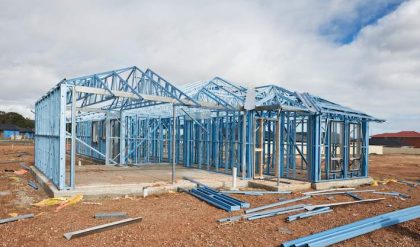Steel structural members are designed to resist yielding, buckling, and rupture under ultimate forces. Steel columns are designed to resist direct compression where the vertical applied load is applied onto the neutral axis of the column, as well as, bending forces induced by lateral wind loads and some vertical applied loads that are applied eccentrically with respect to the neutral axis of the column.
We will be designing steel columns with two scenarios in mind, fully axial loaded columns and axially loaded columns with moments created eccentrically.
1. Axial Loaded Columns Steel columns will be designed for axial compression forces and moment buckling forces. These columns can be braced, where they are supported by braced bays or core walls, or unbraced, where they are members in a portal frame. Often, bracings are used to reduce effective lengths of columns when lateral resistance for buckling is needed and when the steel column’s compression resistance needs to be increased about the always weaker z-z axis. Note: It is always more economic to brace the weakest z-z axis to resist buckling.Columns can be designed for axial compressive force only when equal beams are supported on both sides of a column and when the loads are assumed to distribute evenly.
2. Axially loaded Columns with Moment Created Eccentrically This case is used when the column has been applied eccentric loads that create axial forces and bending moment forces. For scheme design purposes, we will only focus on the design of columns for axial compressive forces only.
Scheme Design
Compressive stresses depend on the slenderness ratio of the column.


Comments are closed.